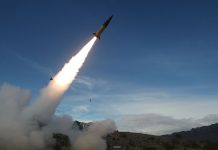This is part two of a two part series on taking better travel images. You can see part one, from last week, here.
5) Embrace the ugliness
Beauty is in the eye of the beholder, of course. So, this tip is really about what you consider ‘ugly’ or perhaps what you would’t normally shoot.
When I started out, it was all about the postcard-like photos. Beautiful places. Photogenic characters. To be honest, I still much prefer to be around such subjects, but I’ll tell you why it’s worthwhile photographing the ugliness.
Former Soviet factories spewing smoke in the industrial town of Rustavi, Georgia. Drones have given us the ability to shoot from virtually any angle that we desire. I flew around quite a bit before I settled on this frame, which aligns a couple of factories and a couple of smoking chimneys. The impact of the scene is magnified through repetition. DJI Phantom 4. 1/160s @ f2.8, ISO 100.
I was born and grew up in the USSR. I came to really hate oppressive Soviet architecture, especially the highrise apartment blocks in which I lived.
Many years later, I journeyed as a photographer around Georgia and Armenia – also former USSR republics. The Soviet architecture, which I so much despised was everywhere, in its ugliest, most abandoned and dilapidated state. I couldn’t escape it.
I decided to change my approach completely, and to turn this theme into my muse. Eventually, I even started to feel compelled to photograph it. I even tried to find beauty in it, like these smoke-belching soviet factories at sunset, which I shot from a drone.
I’ve extended this personal challenge to other subject matter, which I’d never call beautiful and photo worthy in the past. Sometimes the ‘ugliness ’ tells more of a story than the beauty, and it can be more evocative. More gripping, and thought provoking even.
By embracing what you consider ugly, what you wouldn’t usually shoot, you’re expanding your creative horizons. You’re adding variety to your work. You’re also likely showing a different side of the places you visit. And in our world, which is so full of stereotypes and clichéd imagery, this can be incredibly fascinating.
6) Be skeptical about local advice on places to go to
This might seem counterintuitive, but these are unusual travel photography tips.
The advice obviously doesn’t apply if a local is recommending you a famous place, which you planned to visit anyway. Also, when you’re asking about something specific, and you get advice on that – that’s different.
This tip applies more when an enthusiastic local, feels compelled to tell you “You have to see our church, our temple, the view of our village from the mountain top etc.”
 Image: Mitchell Kaneshkevich
Image: Mitchell Kaneshkevich
We’ve all had those cases, and it is very tempting to follow the local advice. What I mean when I say “be skeptical” is – don’t rush to follow this advice. Google the place. You can find photos of the most remote and obscure places these days. See if it’s worth it for you. If you can’t find anything, then consider your other plans.
I’ve changed numerous plans to follow local advice, and they’ve very rarely been worthwhile. The locals are almost never objective. Their places hold special value to them. They might not have traveled much, so they don’t have much to compare to and they have no idea what you’re after.
A local would rarely recommend you to photograph abandoned Soviet buildings. Or, go to an abandoned Soviet resort, where dozens of Abkhazian refugees still live. This is where I met Vakhtang the man in the photo above. We became friends and I photographed him. Ironically, he gave me some bad advice on what’s worth photographing too.
 Vakhtang is a refugee from Abkhazia. At the time of the photo, he’d lived in an abandoned hotel/resort over the past 13 years of his life. I asked him for a portrait on his couch in front of that rug, which is so typical for the region. A detail like this shows that even in an abandoned resort, people want to create a cozy setting for themselves. Panasonic GX80,12mm f/1.4 lens. 1/1000s @ f1.4, ISO 100.
Vakhtang is a refugee from Abkhazia. At the time of the photo, he’d lived in an abandoned hotel/resort over the past 13 years of his life. I asked him for a portrait on his couch in front of that rug, which is so typical for the region. A detail like this shows that even in an abandoned resort, people want to create a cozy setting for themselves. Panasonic GX80,12mm f/1.4 lens. 1/1000s @ f1.4, ISO 100.
So, while locals might know best about many things. After following local advice almost religiously for many years, I have come to a conclusion. When it comes to advice on places of photographic interest, you have to be skeptical.
7) Aim to have the action on your doorstep
What do I mean by action? In this case, it’s whatever you came to photograph. Street life in a city. Ceremonies in a church or a temple, a market.
Whatever it is – you want to be close to it. Even if it means that you’re paying more for a hotel. Or maybe your room isn’t as comfortable as a place further away from the action. It’ll be worth the slight discomfort.
 A beach that serves as living and breeding grounds for thousands of sea lions in Liescas nature reserve. I wanted to emphasise that there was a huge amount of sea lions, so I had to photograph them from slightly above, to show all those heads popping out as far as the eye could see. I also wanted to include those jagged, menacing looking, triangular rocks in the water in the background. Once again, my drone helped me get the ideal angle. DJI Mavic Pro. 1/20s @ f2.2, ISO 100.
A beach that serves as living and breeding grounds for thousands of sea lions in Liescas nature reserve. I wanted to emphasise that there was a huge amount of sea lions, so I had to photograph them from slightly above, to show all those heads popping out as far as the eye could see. I also wanted to include those jagged, menacing looking, triangular rocks in the water in the background. Once again, my drone helped me get the ideal angle. DJI Mavic Pro. 1/20s @ f2.2, ISO 100.
The less you have to travel to the place of your photographic interest, the less early you have to wake up, the less you have to rush, the more energy you have for actually shooting.
You can photograph really intensely, exhaust yourself, then rest in your room and do it all again. Staying even a bus ride or a taxi ride away, can change the dynamics a lot. There are countless times that I never ended up going out to shoot because I dreaded the drive, the traffic, or a really long walk.
As a slightly more extreme case, you can consider camping or even sleeping in a car to get photos of an amazing place at sunrise or at sunset. This is especially convenient if a hotel or a place where you’d normally stay is far away.
That was the case when I once visited a natural reserve on the coast of Peru. There was a spectacular looking beach with a sea lion colony. I knew that in a place like this, the light could really make or break the photo, so I planned to stay the night to get to shoot all the way till the sun would go down and to still have a chance to make more photos at sunrise.
I got the image only because I gave myself those chances. I got back to a town without a rush the next day.
So there you have it. Seven unusual travel photography tips. They come from ideas which I’ve developed through years of traveling around the world and finding myself in all kinds of situations. I know that if you implement these ideas, if you put these tips into action, you will grow as a photographer. You’ll create photos that will be more unique and more interesting. Your photos will stand out from the masses. In a world so saturated with imagery – usually, that’s a good thing. ❂
About the author: Award-winning photographer Mitchell Kaneshkevich is a travel photographer, YouTuber, writer of ebooks and creator of educational photography courses. See more at mitchellk-photos.com.













